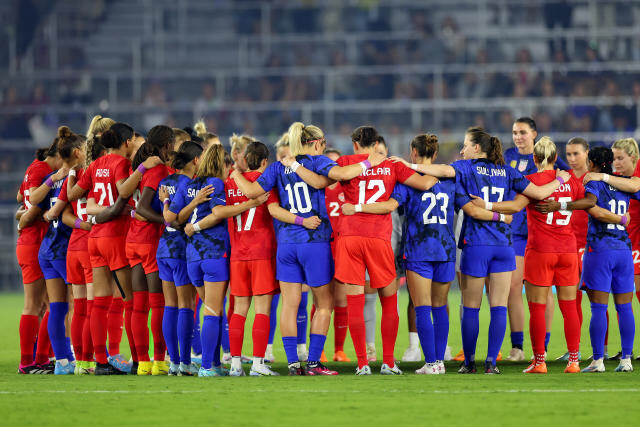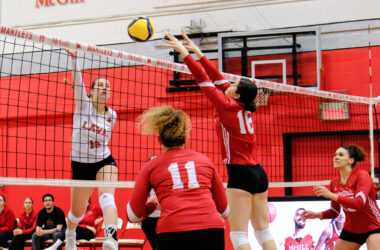After more than two years in the position, Nick Bontis—the president of Canada Soccer—resigned following an escalation in the ongoing labour dispute between the organization and the Canadian Women’s National Team (WNT). Bontis’ resignation is certainly a step in the right direction towards a more productive relationship between Canada Soccer and both the WNT and Men’s National Team, who had their own dispute with the organization in 2022. However, Canada Soccer’s internal fractures and their potential effects on the WNT’s preparations for the upcoming 2023 Australia-New Zealand World Cup cannot be left unaddressed. If these issues continue to fester, the future of the sport in Canada is at stake.
In an ambiguous resignation statement released on Feb. 27, Bontis failed to clarify his position on equal pay and resources. He cited the numerous achievements made by the association, including the successful bid to co-host the 2026 World Cup, though these feats occurred before his election in November 2020.
The announcement comes amid ongoing hostilities between Canada Soccer and the Canadian Soccer Players’ Association (CSPA)––the union that represents the WNT––over differences in expenditures and facilities between the men’s and women’s teams. While the CSPA expressed relief at Bontis’ resignation, they emphasized that more needs to be done.
One of the WNT’s central demands is to be granted similar resources for their 2023 Australia-New Zealand World Cup preparations as the men’s team was provided in the run-up to their historic 2022 Qatar World Cup campaign.
The CSPA’s demands are crucial to feeding the growing momentum for soccer in Canada. Since 1998, soccer has been the most played sport among Canadian children, resulting in the unprecedented developed talent available to both the men’s and women’s teams currently. Adequate funding and pay is vital in ensuring this momentum grows, and that the beautiful game continues to flourish across the country.
The U.S. Women’s National Team achieved equalized pay, resources, and prize money in May 2022 following highly publicized disputes and lockouts over several years. While many regarded the Americans’ dispute as a model for Canada, plans for a similar strike were stifled in late February after Canada Soccer threatened to sue the CSPA.
Instead, the Canadian WNT still routinely sports purple bands to promote their fight for equality in opportunity and pay.
With the Women’s World Cup coming up this summer, the WNT has expressed deep concern regarding the lack of resources provided to them by Canada Soccer. The team has been forced to shorten training camps, cut medical and coaching staff, and even reduce the size of their playing squad. Despite the WNT’s 2020 Olympic gold medal, Canada Soccer continues to disrespect their accolades.
The lack of resources not only harms their chances of success in the tournament, it impedes the dreams of young women and girls hoping to pursue a viable professional career in soccer—careers that are not currently possible without equitable opportunity at the national level.
Although players’ pay is disclosed for neither the men’s nor women’s national teams, insiders and journalists believe that there is a disparity. Some have pointed to the vast gap in World Cup prize pools to explain this. With 5.4 billion cumulative viewers, the 2022 Men’s World Cup distributed a record $440 million USD to national organizations for participation, an astronomical figure compared to the $30 million USD up for grabs at the 2019 Women’s World Cup.
Football administrators have historically argued that equal resource distribution is unsustainable in such a landscape of prize inequality. However, the women’s sport is rapidly catching up to its male equivalent: Viewership increased by 106 per cent between the 2015 and 2019 World Cups. Over one billion people watched the 2019 Women’s World Cup, with the number expected to increase for this year’s edition.
Perhaps this chaos and obfuscation across the board demonstrates Canada Soccer’s institutional incompetence, though in recent days the CSPA announced an interim agreement to settle the WNT’s pay through 2022, complete with per-game incentives and performance bonuses mirroring the structure of the men’s agreement.
Progress on this impasse is vital if Canada Soccer wishes to transform its recent momentum into long-term prosperity. Meaningful reform could launch the beautiful game to blossom as Canada’s biggest sport. Watch out, hockey.









